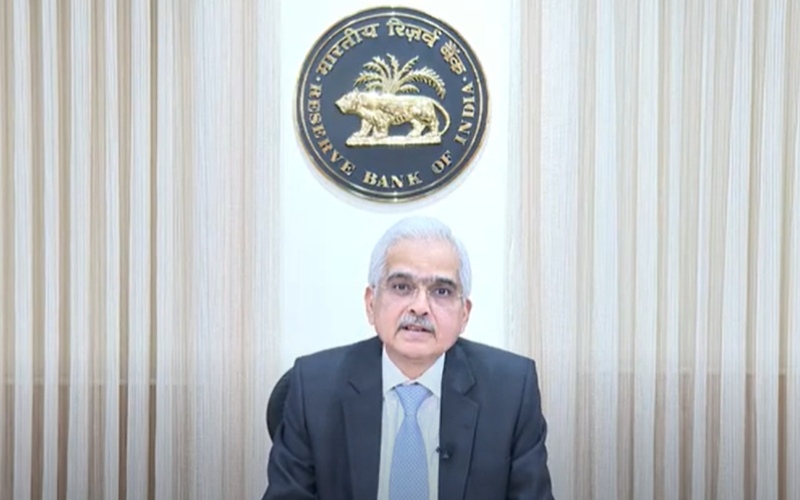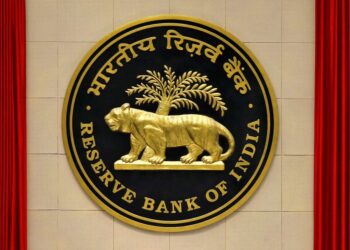The Reserve Bank of India’s (RBI) Monetary Policy Committee chaired by Governor Shaktikanta Das on friday, december 8, 2023, announced several decisions and additional measures related to lending, fintechs, UPI transactions and more. The committee unanimously decided to keep the policy repo rate unchanged at 6.50%. The standing deposit facility (SDF) rate remains at 6.25% and the marginal standing facility (MSF) rate and the Bank Rate is at 6.75%.
The committee projected real GDP growth for 2023-24 at 7.0% with Q3 at 6.5%; and Q4 at 6.0%. Real GDP growth for Q1:2024-25 is projected at 6.7%; Q2 at 6.5%; and Q3 at 6.4%. While the CPI inflation is projected at 5.4% for 2023-24, with Q3 at 5.6% and Q4 at 5.2%.
The additional measures related to lending, fintechs, UPI transactions and more, announced by the committee are:
Framework for Connected Lending: The extant guidelines on connected lending are limited in scope. It has been decided to come out with a unified regulatory framework on connected lending for all regulated entities of the Reserve Bank. This will further strengthen the pricing and management of credit by regulated entities, RBI said in a release.
Regulatory Framework for Web-Aggregation of Loan Products: The Reserve Bank had introduced the regulatory framework for digital lending in August/September 2022. The digital lending ecosystem also comprises services that aggregate loan offers from lenders (called web-aggregation of loan products) for guidance of customers. Several concerns relating to such web-aggregation of loan products harming consumers’ interest have come to our notice. It has, therefore, been decided to lay down a regulatory framework for web-aggregation of loan products. This is expected to result in enhanced customer centricity and transparency in digital lending.
Setting up of Fintech Repository: Financial entities like banks and NBFCs in India are increasingly partnering with Fintechs. For better understanding of developments in the Fintech ecosystem and to support this sector, it is proposed to set-up a Fintech Repository. This will be operationalised by the Reserve Bank Innovation Hub in April 2024 or earlier. Fintechs would be encouraged to provide relevant information voluntarily to this Repository.
Enhancing UPI Transaction Limit for Specified Categories: The limit for various categories of UPI transactions has been reviewed from time to time. It is now proposed to enhance the UPI transaction limit for payment to hospitals and educational institutions from ₹1 lakh to ₹5 lakh per transaction. This will help the consumers to make UPI payments of higher amounts for education and healthcare purposes.
e-Mandates for recurring online transactions – Enhancement of limit for specified categories: e-Mandates for making payments of recurring nature have become popular among customers. Under this framework, an additional factor of authentication (AFA) is currently required for recurring transactions exceeding ₹15,000. It is now proposed to enhance this limit to ₹1 lakh per transaction for recurring payments of mutual fund subscriptions, insurance premium subscriptions and credit card repayments. This measure will further accelerate the usage of e-mandates.
Establishment of Cloud Facility for the Financial Sector in India: Banks and financial entities are maintaining an ever-increasing volume of data. Many of them are utilising the cloud facilities for this purpose. The Reserve Bank is working on establishing a cloud facility for the financial sector in India for this purpose. Such facility would enhance data security, integrity and privacy. It would also facilitate better scalability and business continuity. The cloud facility is intended to be rolled out in a calibrated fashion over the medium term.
Review of the regulatory framework for hedging of foreign exchange risks: The regulatory framework governing the hedging of foreign exchange risks was comprehensively reviewed in 2020 with a view to ushering in a principle-based regime. Based on the feedback received from market participants and experience gained since then, the regulatory framework has been made more comprehensive by consolidating the directions in respect of all types of transactions – over-the-counter (OTC) and exchange traded – under a single Master Direction.
The framework has also been refined to enhance operational efficiency and ease access to foreign exchange derivatives, especially for users with small exposures. This will also ensure that a broader set of customers with the necessary risk management expertise are given the flexibility to manage their exposures efficiently. The Master Direction will be issued separately.








